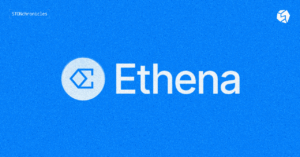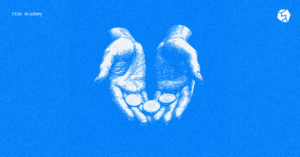The NFT, or Non-Fungible Token, phenomenon made its splashing debut in 2020 on a global scale with the launch of dozens of art-oriented projects that offer proof of ownership and the tethering of real world assets to their digital counterparts. Since then, NFTs have evolved to tackle multiple challenges in a wide variety of industries that encompass many areas of the economy. Be it art, gaming, real estate or even logistics, NFTs can be found in any of these domains with varying degrees of success.
The fact that NFTs can be used outside their originally intended realm of Web3 is a powerful signal that blockchain-based technologies and solutions are not limited to the digital world. In this material, we will explore some innovative means of using NFTs beyond the Web3 domain and explain how Web3 itself is no longer just a digital environment, but rather an extension of the real world we live in.
New Developments
The NFT arose as a very simple means of verifying the authenticity and uniqueness of a digital asset back in 2017 with the rise of the first ever blockchain game – CryptoKitties. The Ethereum-based card collecting game was a monumental hit, but quickly faded into obscurity after the fad had waned. However, the precedent was made and served as a powerful impetus for the development of new types of NFTs. More importantly, it proved that NFTs had potential as assets that evoked interest on the market with their value offering.
One of the latest developments in the NFT domain is the Dynamic Non-Fungible Token – a completely personalized and highly interactive type of asset that grants flexibility in terms of property transformation under certain conditions or over a period of time. This characteristic opens up immense opportunities for the use of Dynamic NFTs in a variety of industries, which, apart from immutability of ownership, require transformation or responses to certain events in the real or digital worlds.
The basis of Dynamic NFTs is their ability to alter metadata after original minting. Smart contracts act as the triggers for the change, deriving the necessary data from oracles or other sources of external stimuli. With the ability to alter their state, Dynamic NFTs outmatch their static originals and allow projects to utilize such a powerful instrument to evolve the user experience like never before.
One simple example for the use of Dynamic NFTs can be in the realm of gaming, which is still very far from Web3. Dynamic NFTs can represent different in-game assets, such as weapons or items of clothing on avatars. These assets, though immutably bound to their owner’s account, can change their innate characteristics based on in-game events or even events that take place in the real world. For instance, a Dynamic NFT can change its appearance to match that of its owner in the form of an avatar. Or, a weapon can gain additional powers or abilities in a magical setting if the holder completes a quest in the real world, such as a challenge in a photo contest posted in social media. The possibilities are truly endless and limited only by the imagination of the developers.
The development of Dynamic NFTs is also progressing, as new types of the asset are being presented, tested, and fielded. Among the most prominent types of Dynamic NFTs currently being marketed are the following:
- Dynamic Supply Tokens – assets that have a supply, which is altered based on external conditions. These assets are reminiscent of algorithmic stablecoins.
- Dynamic Fee Tokens – assets with a dynamic price that is also dependent on changing conditions.
- Dynamic Rewards Tokens – assets with a dynamically changing scale of rewards that is determined by external conditions, much like dividend payouts on stock markets.
Another extremely important aspect of Dynamic NFTs is that they can be created by the users themselves. A simple example can be derived in the gaming industry, where such an asset is minted by the user upon the discovery of a hidden item in the gaming world. In the real world, an example of such minting can be illustrated by the fashion industry, where a new type of clothing or accessory is minted by the fashion house and shown to the public before the item is actually produced, thus generating demand and solidifying it in the form of presales. The ability to change the characteristics of Dynamic NFTs means that they can be altered in the future to reflect any changes to the real world item.
Personalization is the main selling point of NFTs beyond the domain of Web3, since the real world is just as subject to changes as the digital environment. More than that, the real world is much larger and more demanding than Web3, involving multiple sources of data and even more conditions.
Beyond Web3
An important industry that has benefited from the development of blockchain and related technologies is the pharmaceuticals domain. Given the vast amount of fraud and counterfeit in the pharma industry, the blockchain’s ability to offer a tamper-proof, secure and immutable database is an invaluable benefit that cancels out the most malignant of parties – the human factor.
NFTs can be used in the pharmaceutical industry in many ways, offering time-stamped, personalized healthcare to patients. Companies, such as insurance and pharmaceutical producers can also benefit from the use of NFTs, since the technology provides a proven and immutable means of verifying the origin of supplies and grants verifiable external data input via oracles. Anything from trademark registration to individual pill stamping can be transferred to NFTs. Given the infinite number of NFT minting opportunities and the blockchain’s unlimited data storage capability, it will not be difficult for companies to leverage this asset to their benefit.
If the use of AI is to be added to the NFT factor, then the pharmaceutical industry can take a quantum leap forward, automating healthcare and logistics on a personalized basis. This merger of the digital and the physical realms is called a ‘phygital’ revolution that involves the use of Web3 and AI as a basis for the development and improvement of the real world. Most importantly, the revolution is already taking place, with many companies introducing NFTs as part of their business operating schemes. Experts indicate that the use of Internet of Things in the pharmaceutical industry alone is expected to top the $75 billion milestone by 2025.
Metaverse and Real World Bridges
The metaverse is largely being forgotten against the backdrop of a general crypto and blockchain market slump, but its applications are still viable. The metaverse is an excellent platform for bridging the real and digital worlds, providing an excellent sandbox environment for the deployment of various NFTs and the showcasing of goods and services.
Metaverses can act as hubs of management for businesses, operating real world logistics chains as parallel renditions for real time tracking. Production facilities can be operated and managed remotely in metaverse environments, with NFTs acting as tokens representing supply items, or even individual commands issued to machines, robots, or even personnel. Clients can make purchases by ordering and customizing NFTs to reflect their expectations from a product.
The healthcare industry can also take advantage of metaverses, utilizing it as a management location for the analysis of patient data and the issuance of prescriptions in the form of NFTs. Pfizer and Novartis are already experimenting with such technologies, investing in it heavily, with 40% growth year-over-year. Virtual drug trials in metaverses are already hitting the $25 billion investment mark, while virtual consultations in such environments top the $40 billion cap.
Metaverses can no longer be considered without the use of AI. The AI can act as both an analyzer of information and an automated entity, taking on its own avatar to carry out semi-autonomous operations. The AI can be delegated consultations in a limited scope of autonomy within the medical industry, or can be delegated management functions in logistics that are too routine and inefficient in human terms.
By being anchored on the blockchain, AI-based avatars can provide more than just analysis of data, but also data security and integrity for ensuring the ongoing operation of the real world. In this way, the metaverse acts as a bridge between the real and digital worlds, connecting the two to improve the quality of real world operations, with NFTs acting as data carriers.
Key Takeaways
From real estate and logistics to sports and fashion, NFTs have unlimited applications if they are utilized in combination with real world data and a digital infrastructure like Web3. Though it is possible to envision the existence of NFTs solely in Web3 as powerful instruments for data exchange and asset formation, the lack of a real world element limits their potential to a severe extent. That is why the true application of NFTs is in the real world, facilitating physical item production and management on the basis of Web3 acting as an operations facilitator.





